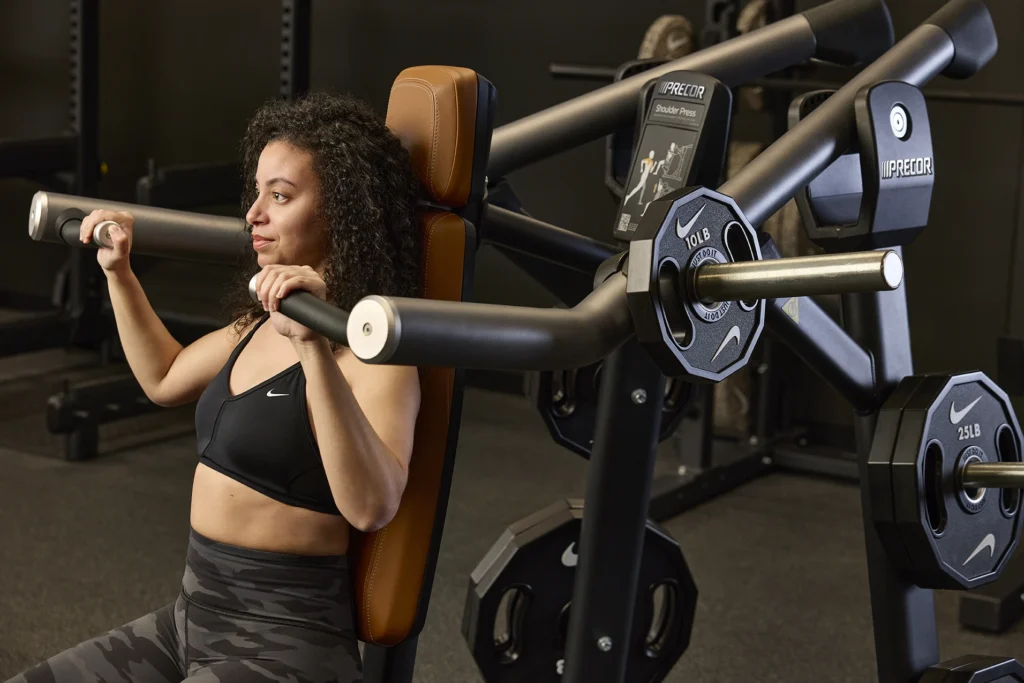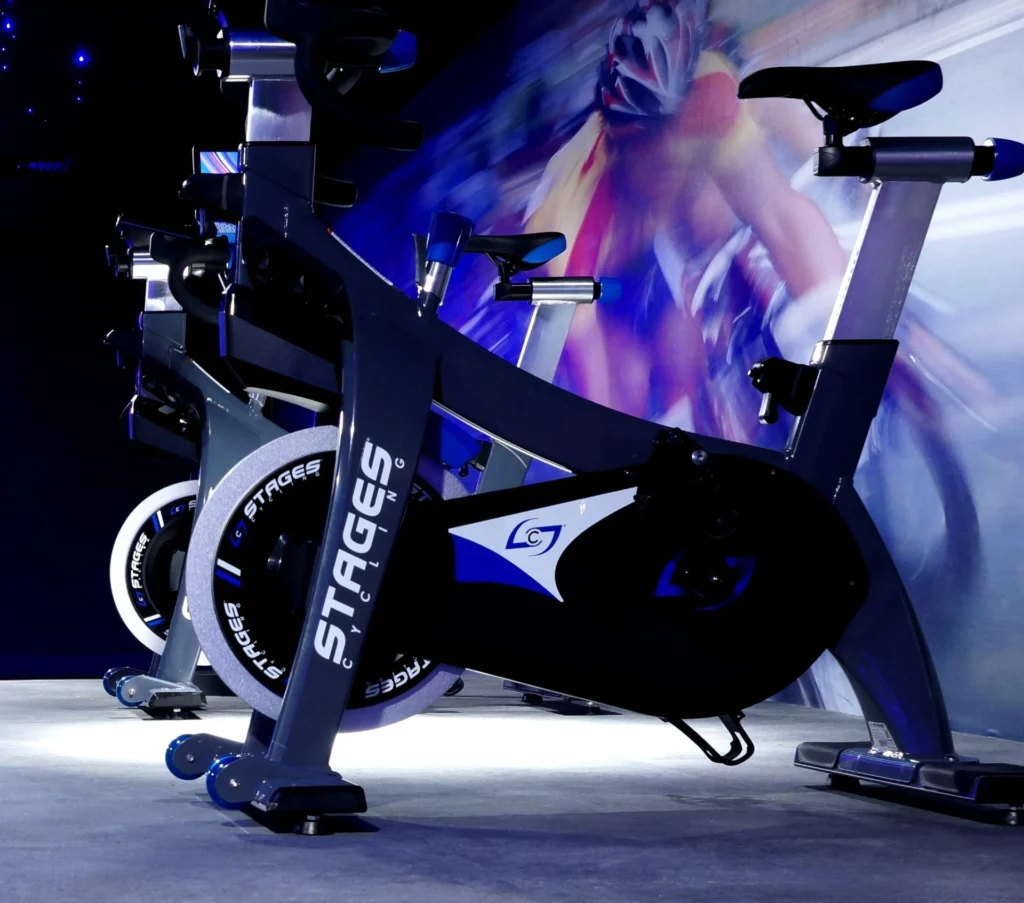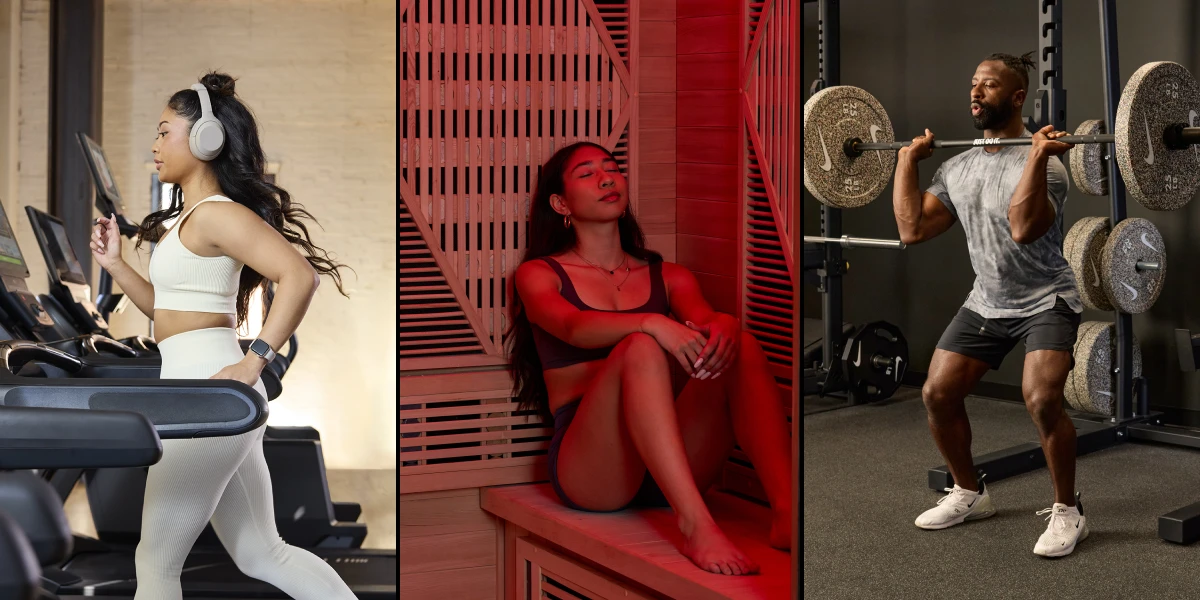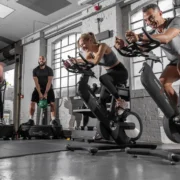Recovery, strength and community are reshaping gyms — and offering new opportunities for growth and retention
A new kind of gym experience is taking shape — one where wellness and recovery are just as important as cardio and strength training. Today’s members expect more from their gym; they’re looking for spaces that cater to their full fitness journey, from intense workouts to stolen moments of relaxation and recovery.
For gym operators, the challenge is clear: how to build a facility that inspires commitment and meets the changing needs of a diverse member base.
“Operators are shifting focus toward holistic offerings because today’s consumers demand environments that prioritize their overall well-being,” says Erica Tillinghast, Precor, Vice President, Marketing. “Wellness and recovery aren’t optional anymore—they’re essential to member satisfaction and retention.”Precor’s “Your Gym, Their Journey” philosophy represents a growing movement to embrace the total spectrum of member possibilities and experiences. At the forefront of this philosophy are their “homegrown,” strategic innovations and recent partnerships that combine intentional technology with thoughtful design, helping fitness business owners rethink what they can offer.
Why Wellness is a Game Changer
Wellness is no longer a fringe concept — it’s a driving force. The global wellness economy is expected to grow from $6.3 trillion in 2023 to nearly $9 trillion by 2028, signaling a notable shift in consumer priorities. People aren’t just looking for a space to exercise; they’re seeking experiences that support quality lifespan.
Recovery-focused offerings like red and infrared light therapy are becoming popular additions and profit centers. These modalities are shown to help reduce inflammation, speed up recovery, and improve circulation, appealing to a wide range of users — from athletes to beginners.
With their exclusive wellness portfolio, powered by Wellness USA, Precor has expanded its offerings to include patented red and infrared light therapy technologies designed to support member recovery and relaxation. Wellness USA has sold more than 40,000 recovery pods and 60,000 additional systems globally, backed by a portfolio of 100+ patents.
The options include:
- Infrared saunas that accommodate 2–8 people, with rapid heating and hyper-oxygen-enriched air systems.
- Recovery beds and pods that feature customizable programs, ergonomic designs and multiple light wavelengths for personalized recovery.
- Contrast therapy pods that offer a combination of hydrofusion, steam, chillers and customizable temperature settings.
An often overlooked benefit of a wellness approach: It expands the pool of potential members. Infrared therapy or saunas appeal to people who might not typically be drawn to traditional gyms. Research published in The Lancet Psychiatry highlights that exercise, including gym activities, is associated with fewer poor mental health days, particularly when it incorporates activities that support overall well-being. This underscores the value of offering diverse wellness options that encourage consistent gym attendance.
“Wellness is no longer an optional add-on — it’s a core expectation for today’s members,” says Tillinghast. “By integrating proven recovery solutions like red and infrared light therapy, gym operators can attract new audiences, foster loyalty, and create spaces that prioritize both physical performance and overall well-being.” Precor created a Wellness ROI Calculator to calculate the value of adding red light therapy and cryotherapy products to your facility, available on the Precor website.
Redefining Strength Spaces
Strength training has made the shift from a basic fitness staple to a key component of both wellness and performance-focused routines. Today’s members expect strength areas that deliver results and inspire them to push their limits.
Research shows that gym environments influence motivation and commitment. Well-designed strength areas, with high-quality equipment that’s easy to use and visually inviting, boost confidence and pride among members. They also offer gyms a chance to stand out, especially when the equipment reflects the needs of both beginners and advanced users.
Through its exclusive partnership with Nike Strength, Precor introduces a premium line of free weights designed to meet the demands of modern fitness spaces. Crafted with durability and sustainability in mind, some of these products incorporate recycled materials derived from the Nike footwear manufacturing process. From precision-machined dumbbells to durable weight plates, these tools support a wide range of training needs.
The operator advantage:
- With iconic Nike design and signature style, these products enhance visual appeal, creating an environment members are proud to share.
- Precision-engineered materials ensure that weights can endure even the toughest workouts, offering long-term reliability.
- Nike Strength Grind products contain recycled materials, appealing to environmentally conscious members while maintaining top-tier performance.
“This partnership reflects our commitment to providing gym operators with products that not only inspire confidence and engage members but also embody the latest in fitness innovation,” says Tillinghast.

The Power of Community
Group cycling remains one of the most vibrant aspects of the fitness experience. It’s more than a workout; it’s a community activity that forges camaraderie and connection.
Indoor cycling programs, when well-executed, can reinvigorate a gym’s group fitness schedule and attract loyal participants. Bikes with advanced technology, accurate performance tracking, and ergonomic design provide an elevated experience for users, helping operators meet the expectations of cycling enthusiasts and newcomers alike. These programs are also a gateway to building deeper relationships with members, turning a workout into a chance for connection and fun.
Through its partnership with Stages Cycling, Precor offers operators access to industry-leading indoor bikes, engineered to withstand the demands of high-traffic fitness spaces. With over 140,000 bikes in use across 5,200 facilities, Stages bikes deliver over 110 million rides annually. Features like durable steel and aluminum frames, minimal maintenance magnetic braking systems and rider-centric adjustability ensure a smooth, personalized experience for every participant.
Key benefits for owners/operators:
- Cycling programs foster camaraderie, transforming members into brand advocates.
- Stages bikes are equipped with precision-engineered power meters that deliver accurate, consistent performance data for every ride.
- Known for their durability and rider-centric design, Stages bikes help operators create high-quality programs that stand out in a competitive market.
Research indicates that gym members who participate in group exercise classes are significantly less likely to cancel their memberships compared to those who work out alone. A study found that members who don’t engage in group exercises face a 56% higher likelihood of canceling their memberships. Additionally, the gym membership retention rate of group exercise studios is an impressive 73%, highlighting the effectiveness of group fitness in fostering member loyalty. These statistics underscore the value of offering diverse wellness options that encourage consistent gym attendance and foster member loyalty.

Tapping Into a Holistic Journey
Wellness, strength, and cardio collectively form the foundation of a holistic fitness journey. By addressing the entire spectrum of member needs—from high-intensity workouts to active recovery—fitness facilities can deliver a more comprehensive experience that fosters loyalty and satisfaction.
Wellness-focused facilities not only attract new members but also create opportunities for long-term engagement,” says Tillinghast. “The data supports what we’re seeing in the field: recovery and holistic health offerings drive loyalty and satisfaction.”
Facilities that integrate wellness and recovery services alongside traditional workout equipment are better prepared to attract and retain members. These additions are no longer “nice-to-haves”; they’re essential. The future of fitness facilities lies in their ability to adapt to changing member expectations. It’s no longer enough to offer the basics; operators must create spaces that inspire, engage and meet diverse needs so that everyone — from the casual visitor to the committed athlete — feels empowered to pursue their fitness journey.














